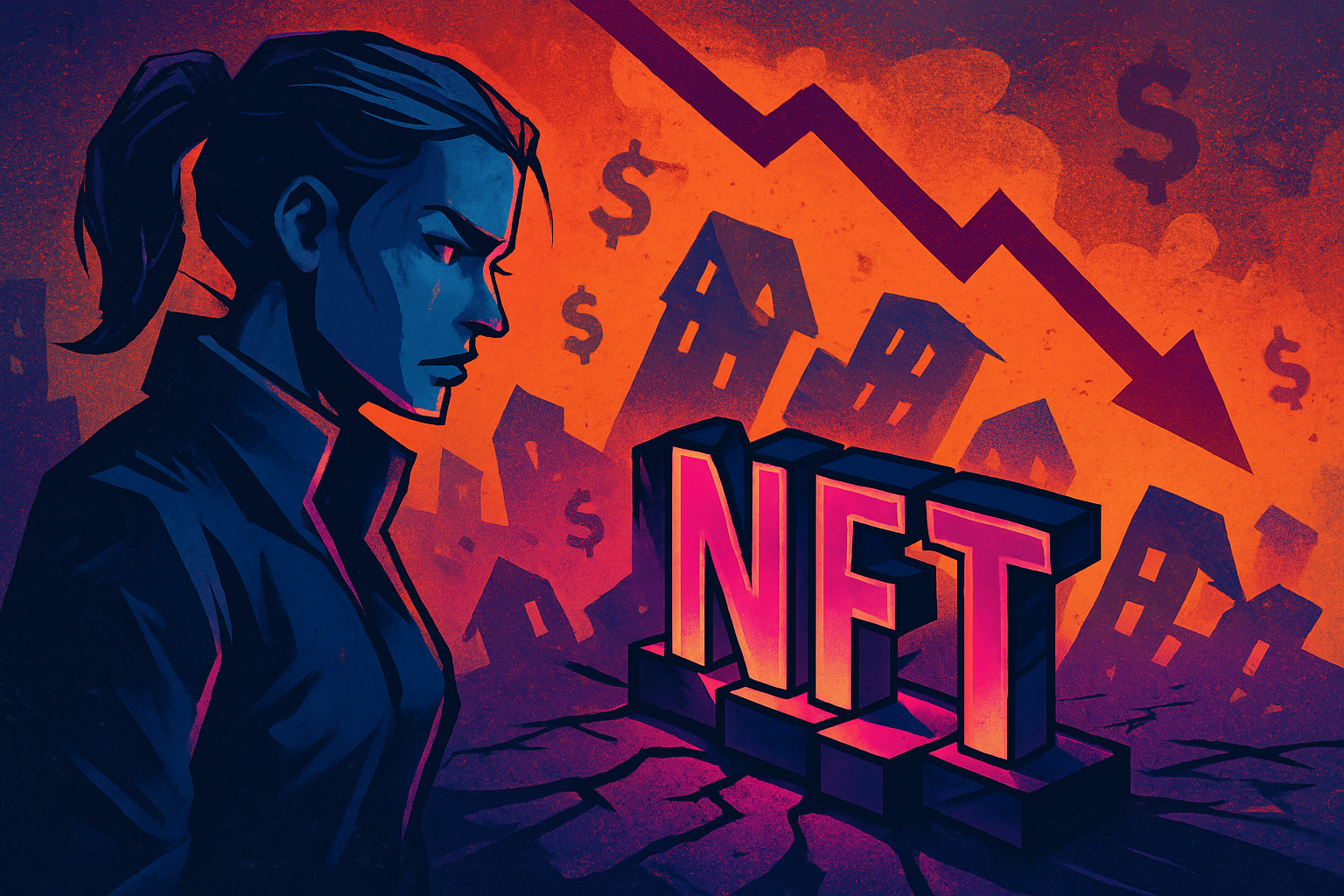The NFT industry is undergoing a major correction. Once hailed as the future of digital ownership, art, and gaming, non-fungible tokens are now facing a wave of skepticism, closures, and plummeting market activity.
As financial markets struggle with tariff-driven volatility, the NFT sector has been hit particularly hard—raising serious doubts about its long-term viability. The speculative bubble hasn’t simply deflated—it’s collapsing under its own weight.
Data Confirms Sharp Market Contraction
The NFT space once held sky-high expectations, with forecasts of a $264 billion market by 2032 and weekly volumes exceeding $3 billion during 2021’s peak.
But the outlook has changed dramatically. In Q1 2025, weekly NFT trading volume plunged 93% to just $23.8 million, according to DappRadar.
Blockchain analyst Sara Gherghelas described the downturn as “structural rather than cyclical,” citing a significant decline in active traders.
“This was an ecosystem built on hype. That momentum has completely stalled.”
2024 figures show:
- Trading volume fell by 20% YoY
- Sales dropped 18%
Despite its early promise, the sector has yet to find a sustainable value proposition.
Lack of Clarity, Lack of Utility
The challenges go beyond just numbers. Legal uncertainty is a persistent barrier to mainstream adoption.
According to Alice Frei, legal officer at OutsetPR:
- In the U.S., NFTs are often treated as securities
- In the U.K., they’re more akin to intellectual property
- In many countries, no formal guidelines exist
“This regulatory fragmentation leaves the door open to fraud and undermines investor trust.”
Even as potential use cases—such as digital identity, tickets, and real estate records—are discussed, most NFTs remain speculative assets with limited utility.
Notably, the gaming sector has struggled to integrate NFTs successfully. Ubisoft’s Project Quartz, an early attempt to introduce NFTs to mainstream gaming, was quietly abandoned due to community backlash.
“Gamers want immersive experiences—not assets that double as financial instruments,” said Frei.
Marketplace Shutdowns Signal Structural Weakness
March saw a wave of platform closures:
- LG Art Lab ended operations after three years
- X2Y2, once considered a serious OpenSea competitor, shut down after a 90% collapse in trading
- Bybit exited the NFT space following a $1.46B exploit, reportedly linked to North Korea
Frei added:
“Even marquee names like Bored Ape Yacht Club have seen values fall from $400K+ to under $50K. Without utility, price alone can’t sustain attention.”
Coinbase Retreats from the Spotlight
Major exchanges are also pulling back. Coinbase, once a vocal advocate for NFTs, has gone silent on its marketplace ambitions. Its focus now appears to be on Base, its layer-2 infrastructure.
With little support from major players, smaller platforms may find survival increasingly difficult.
“Without scale or unique value, many marketplaces won’t make it,” Frei warned.
Gaming: A Narrow but Viable Avenue
Some optimism remains in gaming—if developers can avoid pay-to-win traps and create experiences where NFTs enhance rather than exploit gameplay.
“Gaming could still save NFTs,” said Frei, “but only if utility is built first—not added as an afterthought.”
Post-Hype Reality: What Comes Next?
The NFT boom is over, and what remains is a fragile ecosystem in need of reinvention. To remain relevant, NFTs must prove practical value beyond collectibles and speculative trading.
“To survive,” Frei concluded,
“NFTs must evolve from hype-driven novelties into meaningful tools for digital ownership.”



